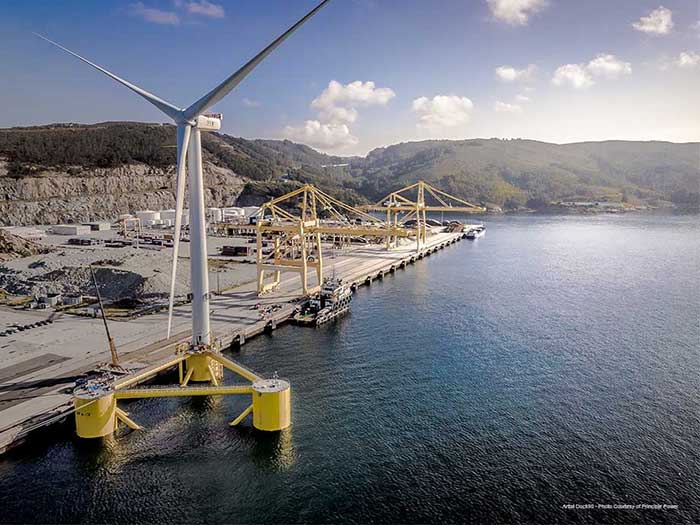
VIDEO: World’s largest floating wind turbine sets sail
Written by Nick Blenkey
The largest floating wind turbine in the world, an 8.4-megawatt (MW) ABS-classed offshore unit
The world’s largest floating offshore wind turbine, an 8.4-megawatt (MW) an ABS-classed unit, recently departed for its final destination, the WindFloat Atlantic wind farm, 20 kilometers off the Portuguese coast of Viana do Castelo, where its commissioning will take place.
It is the first of three ABS-classed, semi-submersible units designed by Emeryville, Calif.,headquartered Principle Power and housing MHI Vestas turbines. They will deliver a total of 25 MW of floating offshore wind power. WindFloat Atlantic is continental Europe’s first large scale floating wind farm.
“Floating turbines enable us to reach offshore wind resources in water that is too deep for conventional bottom-fixed turbines,” said Christopher J. Wiernicki, ABS Chairman, President and CEO. “It is breakthroughs such as this that will make a vital contribution to the global transition to clean energy.”
The project developer is the Windplus consortium, which is jointly owned by EDP Renováveis, ENGIE, Repsol, and Principle Power Inc.
Scheduled to go online at the end of 2019, the development is based on the same principles as the original Principle Power designed concept, WindFloat 1, that was installed offshore Portugal in 2011.
“Principle Power is very pleased to work with ABS, once again, in the framework of the WindFloat Atlantic project, building on the successful collaboration of the WindFloat 1 prototype,” said Steven Barras, Chief Technical Officer at Principle Power. “WindFloat Atlantic represents a major milestone for the floating offshore wind industry as it is the world’s first semi-submersible floating wind farm. We are proud of having led the process of industry standard-setting from the early days, together with ABS, and we look forward to taking the WindFloat technology to full commercialization around the world.”
Thanks to their floating foundations, floating offshore wind farms are not subject to the same depth restrictions as fixed structures and can be at any depth. With the development of larger turbines above 10 MW and research focused on shallow water moorings, the floating technology may even be an alternative to traditional bottom-founded technologies in intermediate water depths in the future.
“Large highly-efficient turbines reduce capital costs as well as operating costs, so the deployment of the world’s largest floating offshore turbine is a significant milestone in this emerging industry,” said Matt Tremblay, ABS Senior Vice President, Global Offshore. “As the world’s leading offshore classification organization, we are able to leverage our extensive experience with the oil and gas sectors to support safety and innovation in the offshore wind industry.”




